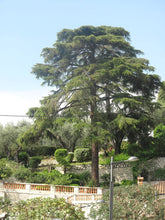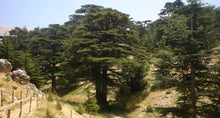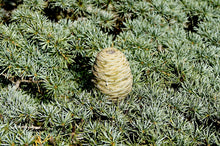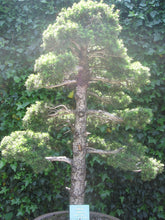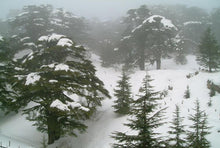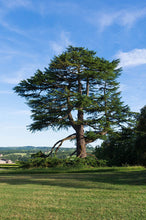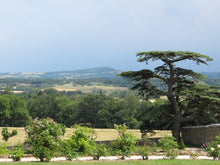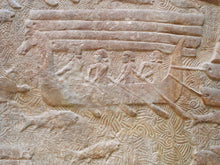Cedar of Lebanon
Regular price
$5.00
Sale
Cedrus libani
Origin: Turkey
Improvement status: Wild
Seeds per packet: ~12
BOTANICAL SAMPLE - NOT GERMINATION TESTED
Life cycle: Perennial
Cedar of Lebanon is an iconic evergreen conifer native to Lebanon, Syria, and Turkey (with a close cousin or perhaps subspecies growing in Cyprus). It is such an important symbol in Lebanon that it appears on the country's flag. It's mentioned multiple times in the Hebrew Bible: Moses ordered priests to use the bark of the tree in the treatment of leprosy; Solomon used its timber to build the First Temple in Jerusalem; and in Psalm 92:12 it says, "The righteous shall flourish like a palm tree: he shall grow like a cedar in Lebanon."
Mature cedars of Lebanon have become quite rare in Lebanon and Syria due to many centuries of use. Ancient Phoenicians achieved their legendary feats of seafaring in boats made from cedars of Lebanon. Ancient Egyptians so coveted Phoenecians' cedar ships that they buried two disassembled boats beside the Great Pyramid of Khufu (complete with instructions for how to reassemble them in the afterlife). The extremely durable wood is still prized today for its fine grain, attractive color, and pleasant fragrance, which makes it repellent to insects. Ancient Egyptians also used its resin in mummification.
Cedars of Lebanon have a long history of medicinal use as well, especially the resin (cedria) and the essential oil (cedrum). It has been used for a range of ailments including acne, eczema, psoriasis, celiac disease, diabetes, pancreatitis, parasitic infections, rheumatism, fever, dropsy, coughs, scurvy, and allergies. It's recently been studied extensively against a variety of cancers, showing great promise (please google "cedrus libani cancer" if you have any doubts!).
Trees from Lebanon are not nearly as hardy as the trees from the Taurus Mountains in Turkey, so the earliest imported seeds to the US only grew about as far north as New York and Philadelphia, where it became a popular tree in the 1800s. Trees were grown in London as early as the 1600s (a famous old tree stood in Highgate Cemetery until just a few years ago). It wasn't until Charles Sargent, director of the Arnold Arboretum in Boston, hired a German plant explorer named Walter Siehe in 1900 to collect seeds from the Taurus Mountains that cold-hardy Cedar of Lebanon reached North America. Some of the first seedings he sent across the ocean still stand at Arnold. Pennsylvania's Morris Arboretum boasts more than a few trees from the 1800s, and the former Pennsylvania state champion tree at Tyler Arboretum, planted in the 1860s, was only just taken down in 2021 (likely a victim of climate change, though it did reach the lower end of its natural life expectancy), but not before scions were taken and at least 4 successful grafts made.
These seeds were imported from Turkey by the good folks at Sheffield's Seed Company. We're hopeful that they have the same cold-hardiness as those sent here over a century ago.
GROWING TIPS: Soak seeds for 24 hours. Cold stratification is not required, but a brief cold period does seem to help seed germination. Sow 1/2" deep. Hardy at least to Zone 6 (though some Zone 5 specimens have reached advanced age in North America).









